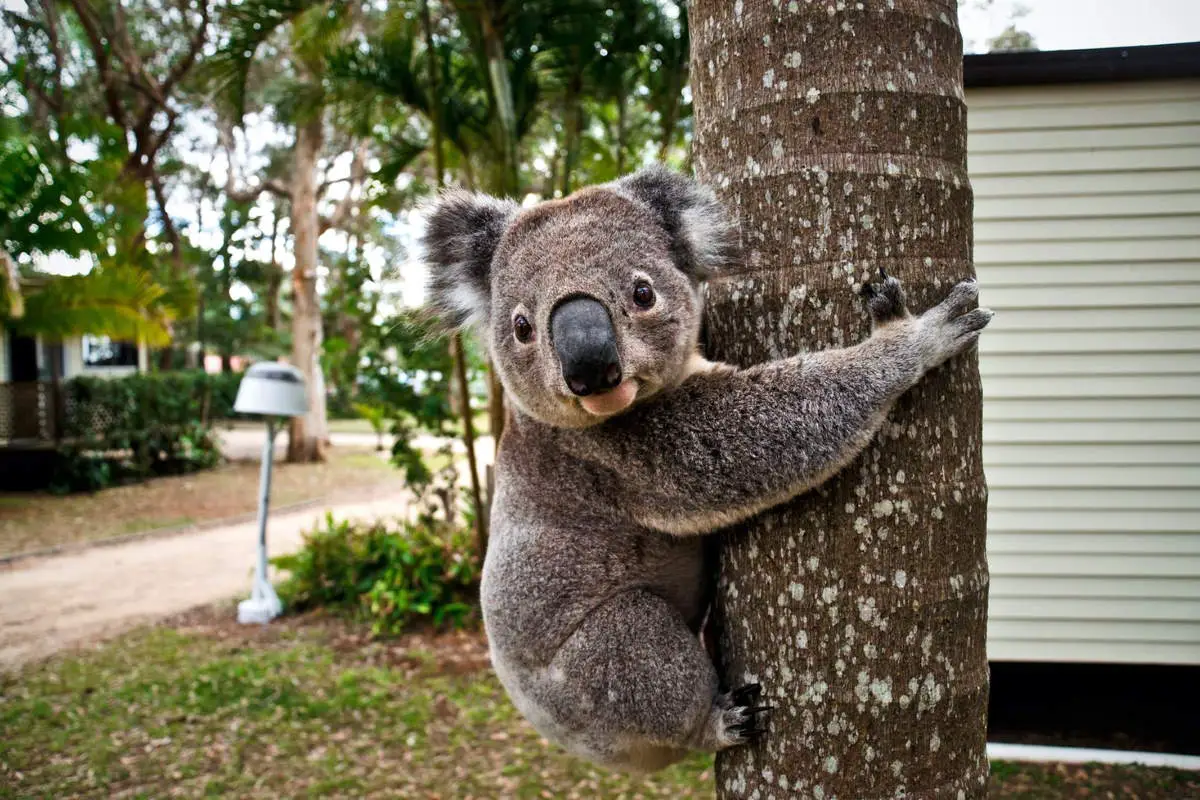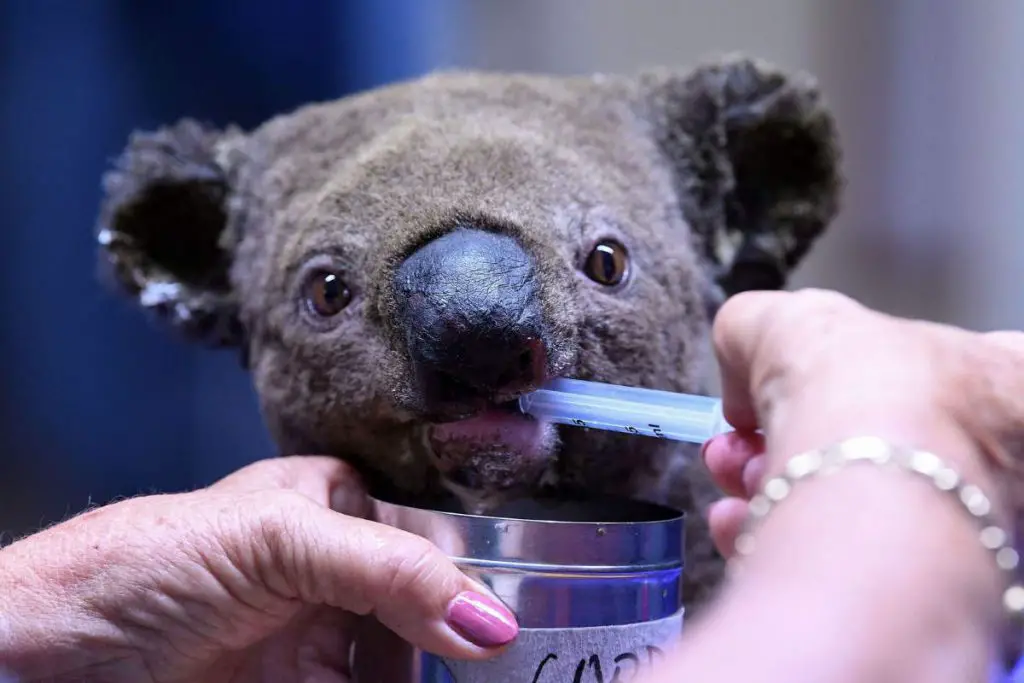Koala (Phascolarctos cinereus) is an arboreal herbivorous marsupial native to Australia. They can be found in coastal areas of the Australian mainland’s eastern and southern regions. Here are 10 amazing koala facts.
Koala Facts
1. Australia is the only place in the world where koalas are found
The koala is a well-known animal worldwide and is a major draw for Australian zoos and wildlife parks. Only in 1998, they benefited the national tourism industry by over 1 billion Australian dollars, and this figure grows every year. At least 75% of European and Japanese tourists placed the koala at the top of their list of animals to see.
2. As everyone knows they love to sleep
Koalas don’t have much energy and they don’t like to move around much, except to move to another branch when their leaves are gone. And they can sleep up to 18-20 hours a day.
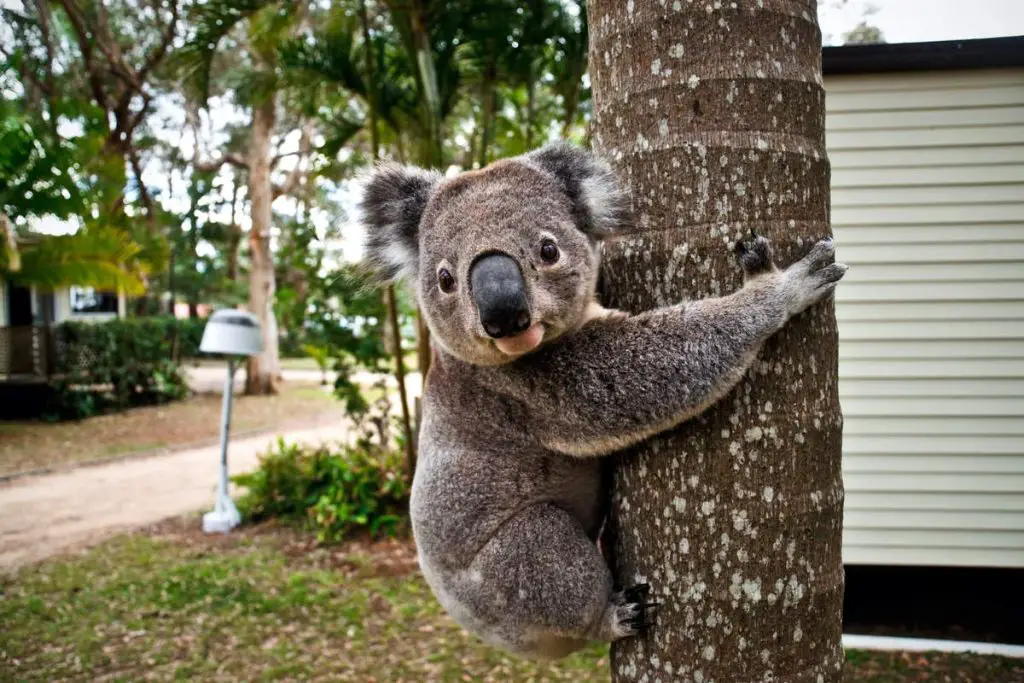
3. They feed on eucalyptus
Eucalyptus is poisonous to most animals, but the leaves of this plant are the main food of koalas. A koala can eat up to 1 kilogram (2.2 lbs) of eucalyptus leaves per day, and a special fiber digestive organ called the cecum helps detoxify the chemicals in the leaves. Also, they accumulate leaves in their cheeks to consume later.
4. Koala is a marsupial, like kangaroos
The gestation period of koalas is 35 days. Baby koalas are called “Joeys”. They are born blind and without fur.
They have not completed their development when they are born and they weigh only half a gram. A joey grows and develops in its mother’s pouch for about six months.
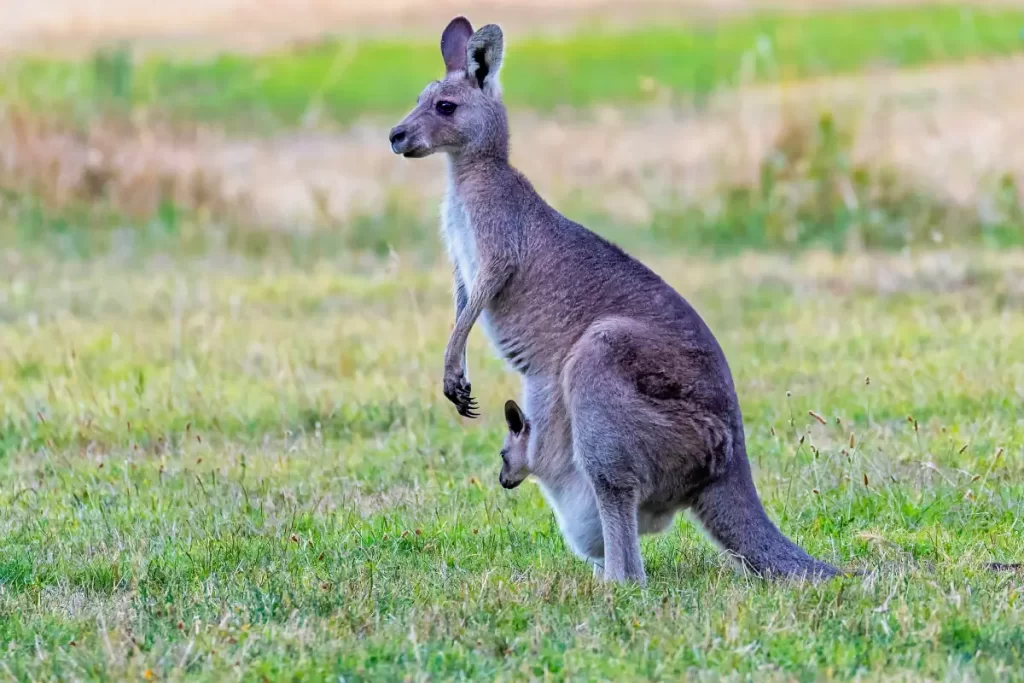
Related: 10 Amazing Kangaroo Facts
5. They have unique fingerprints, like humans
Fingerprints of koalas are very similar to human ones, not only in shape but also in spiral and swirl-like patterns.
Moreover, just like in humans, the fingerprints of all species in koalas are different from each other, so they all have fingerprints that show their own identity.
Their fingerprints are almost indistinguishable from humans.
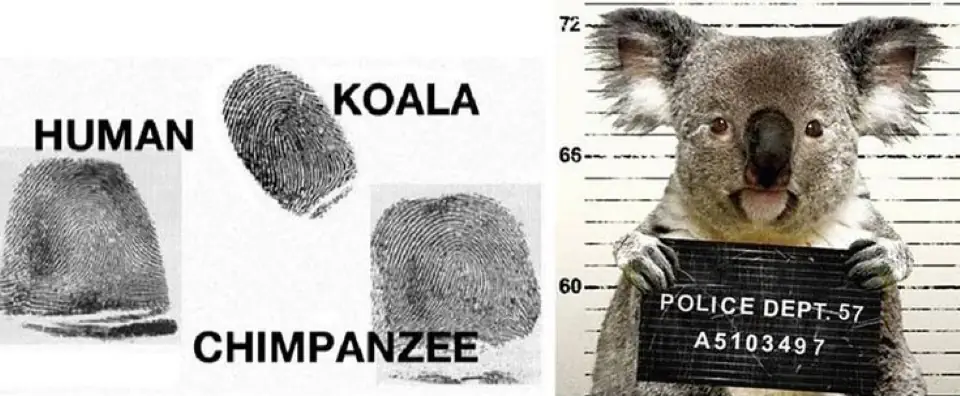
6. They don’t like water
Koalas usually don’t like water, but, despite that, they’re good swimmers.
7. They hug trees on hot days
Koalas are negatively affected by temperature waves. That’s why they lick their hairs to cool off and breathe fast and this also causes thirst. That is why koalas prefer to hug trees in hot weather, which is about 5 degrees colder than the air.
Tree hugging can halve a koala’s water needs to cool itself on a hot day.
8. They use different sounds to communicate
The adult male releases loud bellows consisting of a series of snoring-like inhalations and grunt-like exhalations.
male koalas tend to roar, attract females and intimidate males who try to approach their group, especially during the mating season. Likewise, they shout to other members of the community to let them know they’ve moved to a new tree.
Females scream, growl and cry when in danger and need to defend themselves.
9. Their name means “no water”
The word koala comes from gula, which means “no water” in the Dharug language (an Australian Aboriginal language).
It was thought that koalas didn’t need to drink because of the moisture they get from juicy eucalyptus leaves. However, in fact, they do drink from various water sources when needed, especially during heatwaves and in times of drought.
10. They can survive in the urban areas
While urbanization can pose a threat to koala populations, these adorable animals can survive in urban areas provided enough trees are present.
Some not so-amazing koala facts
Koalas are vulnerable to bushfires due to their slow movements and the flammability of eucalypt trees. To make things worse, during a wildfire, they instinctively seek refuge in the higher branches, where it is vulnerable to intense heat and flames.
2019 bushfires in Australia have killed more than 1,000 koalas and destroyed 80% of their habitat.
They also typically breed once a year, so their reproduction speed is slow.
Urban koala populations also have distinct vulnerabilities: collisions with vehicles and attacks by domestic dogs. Dogs and cars kill about 4,000 koalas every year.
Habitat loss caused by humans leads to population decline, fragmentation, and loss of genetic diversity. Such genetic bottleneck causes low sperm count, decreased sperm motility, deformed flagella, difficulty in captive breeding, and susceptibility to disease. It also results in inbreeding, which detrimentally impacts species survival.
They were classified as Least Concern on the IUCN Red List but reassessed as Vulnerable in 2014.
The World Wildlife Fund (WWF) already estimated that koalas could be extinct by 2050, due to forest clearing and human expansion.
Sources
- Koala on Wikipedia
- “10 Interesting facts about koalas” on the World Wildlife Fund (now known as WWF) website
- Koala facts on the Queensland Government Department of Environment and Science website
- Koala facts and photos on the National Geographic website
- “10 fascinating koala facts” on the National Geographic Kids website
- “Interesting Koala Facts” on the Australian Koala Foundation “Save the Koalas” website
- Sloth Facts: 10 Amazing things about these adorable mammals - August 12, 2022
- 10 Amazing Koala Facts - February 18, 2022
- 10 Amazing Humpback Whale Facts - December 22, 2021
